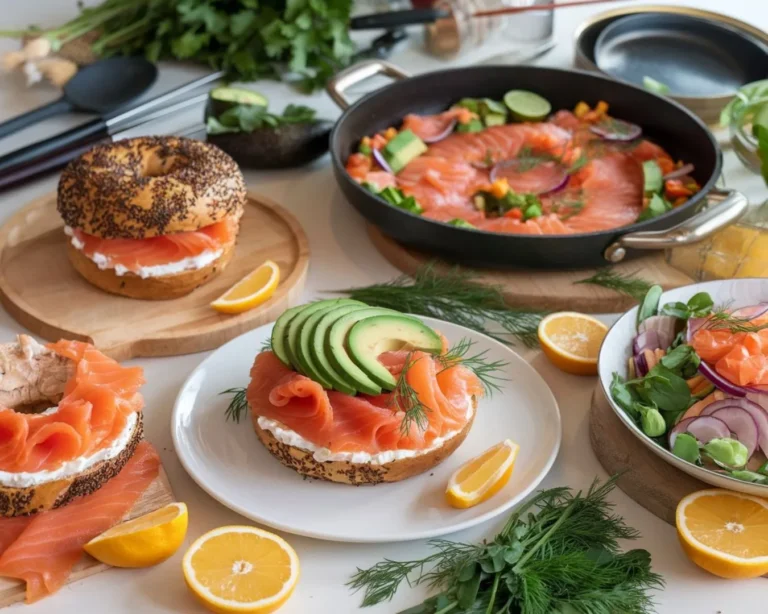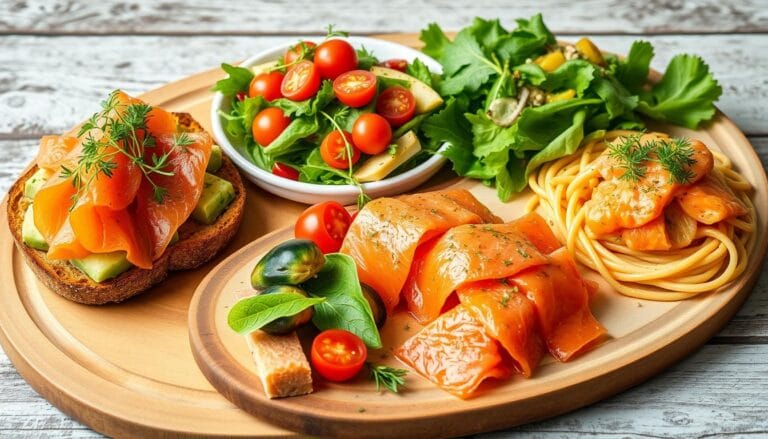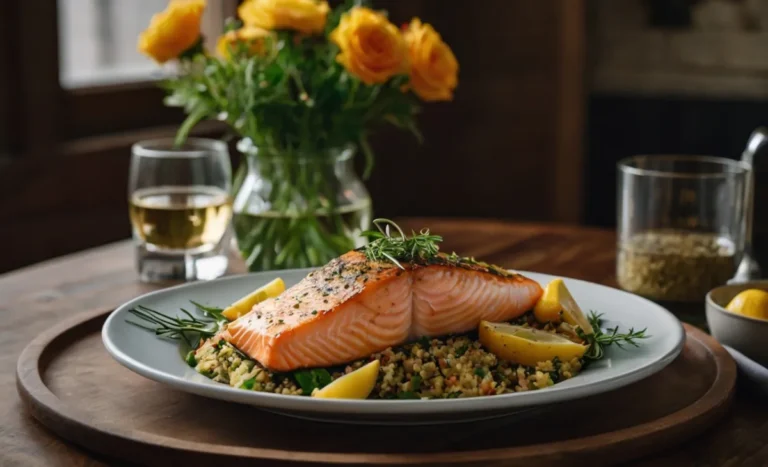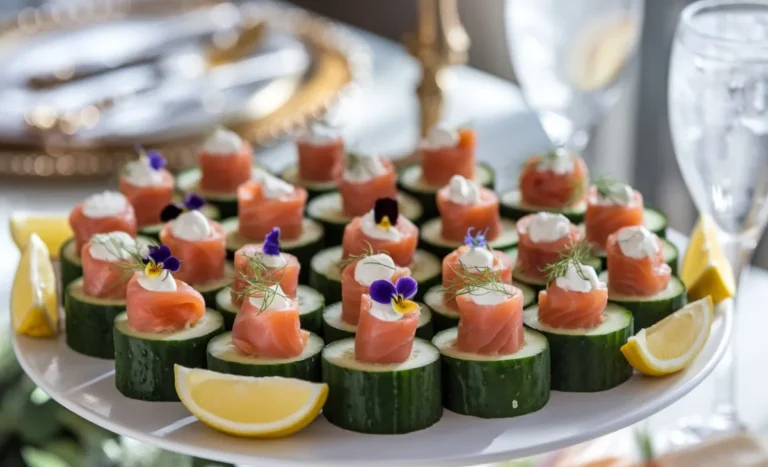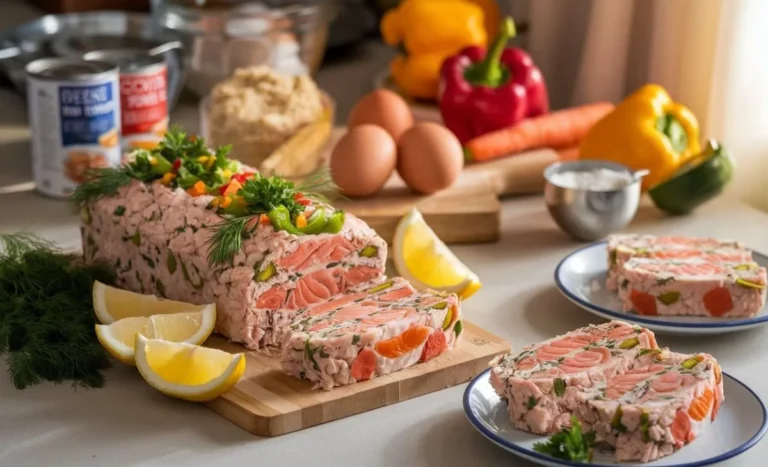Baking Salmon in Oven at the Perfect Temperature: Secrets to Success
Baking salmon in the oven is an art that, when mastered, can elevate your meals to an entirely new level. Whether you’re a seasoned home cook or just starting your culinary journey, baking salmon provides a foolproof method to create a dish that’s both healthy and delicious. Imagine the aroma of fresh herbs mingling with the natural richness of salmon as it bakes to tender perfection. This guide will walk you through every step, from selecting the right temperature to ensuring your salmon turns out flawless every single time. Let’s dive into the secrets of baking salmon in the oven and discover how to make this process simple yet sensational.
Why Baking Is the Best Way to Cook Salmon
Baking salmon in the oven isn’t just convenient—it’s also one of the healthiest and most flavorful cooking methods. By using the oven, you can achieve consistent heat distribution, ensuring that your salmon cooks evenly. Plus, baking locks in moisture, which means your salmon will be tender and juicy every time. Unlike frying, baking requires minimal oil, making it a heart-healthy choice. You also have endless options for seasonings and marinades, allowing you to experiment with flavors that suit your palate. Whether you’re aiming for a classic lemon-herb salmon or something more adventurous like a soy-ginger glaze, baking provides the perfect canvas for creativity.

Understanding the Perfect Temperature for Baking Salmon
Recommended Temperatures for Different Results
Temperature plays a pivotal role in determining the texture and flavor of your baked salmon. If you prefer a melt-in-your-mouth experience, baking at 350°F is ideal. This lower temperature ensures the salmon remains tender and moist. For those who enjoy a balance of crisp edges and a soft interior, 400°F is the sweet spot. If time is of the essence, baking at 425°F will cook your salmon quickly while maintaining a firmer texture. Each temperature has its unique benefits, so the choice depends on your personal preference and the outcome you’re seeking.
How to Check Salmon’s Doneness
Ensuring your salmon is cooked perfectly requires a bit of attention. The FDA recommends an internal temperature of 145°F for fully cooked salmon. To check, insert a meat thermometer into the thickest part of the filet. Another method is the flake test—gently press the flesh with a fork. If it flakes easily and has a slightly translucent center, it’s ready to serve. Remember, salmon continues to cook slightly after being removed from the oven, so taking it out just before it’s fully cooked will give you the best results.
Preparing Salmon for the Oven
Choosing the Right Cut
The type of salmon you choose can significantly impact your dish. Filets are the most common choice for baking, as they cook evenly and are easy to portion. Salmon steaks, while thicker and meatier, may require slightly longer cooking times. Another consideration is whether to use skin-on or skinless salmon. Skin-on filets are ideal for baking as the skin helps retain moisture and adds a layer of flavor. However, if you prefer not to deal with the skin, skinless salmon works just as well with proper preparation.
Essential Steps Before Baking
Preparation is key to achieving perfectly baked salmon. Start by patting the salmon dry with paper towels to remove excess moisture. This step ensures even cooking and helps the seasonings adhere better. Season your salmon generously with salt and pepper, then add your favorite herbs or spices. For an extra burst of flavor, consider marinating your salmon for 30 minutes before baking. Popular marinades include combinations of olive oil, garlic, lemon juice, soy sauce, or honey. These ingredients not only enhance the flavor but also help tenderize the fish.

Step-by-Step Guide to Baking Salmon
- Preheat your oven to the desired temperature (350°F, 400°F, or 425°F).
- Line a baking sheet with parchment paper or aluminum foil for easy cleanup.
- Place the seasoned salmon on the baking sheet, skin-side down if applicable.
- Bake for 12-15 minutes, adjusting the time based on the thickness of the salmon and your chosen temperature.
- Use a meat thermometer to check the internal temperature. It should read 145°F when done.
- Allow the salmon to rest for 2-3 minutes before serving to let the juices redistribute.
Common Mistakes to Avoid
While baking salmon is straightforward, a few common mistakes can lead to less-than-ideal results. Overcooking is the most frequent error and results in dry, tough salmon. To avoid this, always monitor the internal temperature and remove the salmon from the oven slightly before it’s fully cooked. Another mistake is under-seasoning. Salmon has a rich, natural flavor that pairs beautifully with various herbs and spices, so don’t hold back on the seasoning. Finally, skipping the resting step can cause the juices to run out, leaving your salmon dry. Letting it rest for a few minutes ensures a juicy, flavorful bite every time.
Recipe: Simple Herb-Baked Salmon
Ingredients
| Ingredient | Quantity |
|---|---|
| Fresh salmon filets | 4 (6 oz each) |
| Olive oil | 2 tbsp |
| Garlic powder | 1 tsp |
| Dried parsley | 1 tsp |
| Lemon slices | 4 |
| Salt and pepper | To taste |
Instructions
- Preheat your oven to 400°F.
- Arrange the salmon filets on a lined baking tray.
- Drizzle olive oil over the salmon to prevent sticking and enhance flavor.
- Sprinkle garlic powder, parsley, salt, and pepper evenly over the filets.
- Top each filet with a lemon slice to infuse a bright, zesty flavor.
- Bake for 12-15 minutes, ensuring the internal temperature reaches 145°F.
- Serve immediately and enjoy!

Nutritional Information
| Nutrient | Amount per Serving |
| Calories | 250 |
| Protein | 28g |
| Fat | 14g |
| Carbohydrates | 1g |
| Omega-3 Fats | 2g |
Pairing Suggestions for Baked Salmon
Side Dishes
Baked salmon pairs wonderfully with a variety of side dishes. Roasted vegetables such as asparagus, broccoli, or carrots add a touch of earthy sweetness. For a heartier option, serve your salmon with quinoa or wild rice. A fresh green salad with a tangy vinaigrette is another excellent choice that complements the rich flavor of the salmon.
Sauces and Garnishes
Enhance your baked salmon with a flavorful sauce or garnish. A lemon-dill yogurt sauce provides a creamy, tangy contrast. For a tropical twist, try a fresh mango salsa. Finally, sprinkle fresh herbs like parsley or dill over the salmon just before serving for an extra burst of freshness.
FAQs About Baking Salmon in Oven
What’s the Best Temperature for Baking Salmon?
The ideal temperature for baking salmon is 400°F, as it offers a perfect balance of crispy edges and a moist interior. However, you can adjust the temperature to suit your preferences.
Can You Bake Frozen Salmon?
Yes, you can bake frozen salmon, but you’ll need to add 5-10 minutes to the cooking time. Ensure the internal temperature reaches 145°F before serving.
How Can You Tell When Salmon Is Done?
Use a meat thermometer to check that the salmon’s internal temperature is 145°F. Additionally, the flesh should flake easily with a fork and appear slightly translucent in the center.
Should I Cover Salmon While Baking?
Covering salmon with foil can help retain moisture, especially if you’re baking at a lower temperature. This method is ideal for those who prefer extra-tender salmon.
Conclusion: Perfecting the Art of Baking Salmon
Baking salmon in the oven is a simple yet rewarding cooking method that delivers consistently delicious results. By understanding the perfect temperature and following these easy steps, you’ll master the art of baking salmon in no time. Experiment with seasonings, pair it with complementary sides, and enjoy a wholesome, flavorful meal. So, preheat your oven, grab your favorite salmon recipe, and get ready to impress your taste buds and dinner guests alike.


